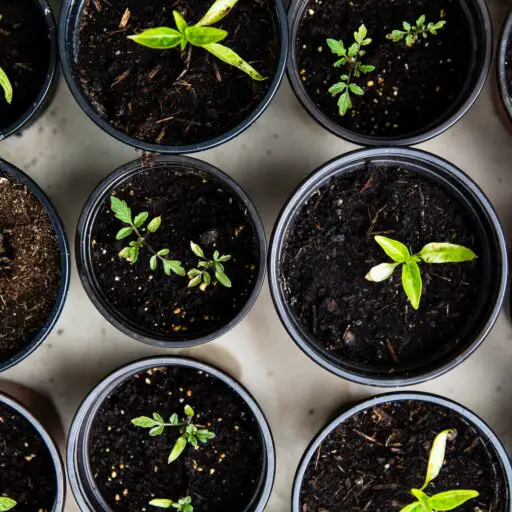Support our educational content for free when you purchase through links on our site. Learn more
Have you ever wondered how a simple patch of soil can transform into a vibrant community hub? Community gardening is not just about growing plants; it’s about cultivating relationships, sharing knowledge, and creating a sustainable food source. In this article, we’ll explore 10 essential plants that can elevate your community garden, ensuring a bountiful harvest while fostering a sense of togetherness among members.
Imagine walking through a garden filled with lush tomatoes, fragrant herbs, and colorful flowers, all while sharing tips and laughter with your fellow gardeners. Did you know that community gardens can increase access to fresh produce by up to 40% in urban areas? This statistic highlights the profound impact of these green spaces on local communities. So, whether you’re a seasoned gardener or just starting, let’s dive into the world of community gardening plants that can help you grow together!
Key Takeaways
- Diverse Plant Selection: Choose a mix of vegetables, herbs, and flowers to create a thriving ecosystem.
- Companion Planting Benefits: Utilize companion planting techniques to enhance growth and deter pests.
- Community Engagement: Foster collaboration and communication among gardeners for a successful gardening experience.
- Sustainable Practices: Implement eco-friendly methods to promote soil health and water conservation.
- Easy-to-Grow Varieties: Start with beginner-friendly plants like tomatoes, lettuce, and herbs for quick success.
Ready to start your community gardening journey? 👉 Shop for essential gardening supplies like tomato plants, herb seeds, and flower seeds to get growing today! 🌼
Table of Contents
- Quick Tips and Facts
- The Joy of Community Gardening: Why Plants Matter
- Top 10 Community Gardening Plants for Every Season
- Choosing the Right Plants for Your Community Garden
- Companion Planting: The Secret to Thriving Gardens
- Herbs, Vegetables, and Flowers: A Diverse Plant Palette
- Sustainable Practices in Community Gardening
- Common Challenges and Solutions in Community Gardening
- Engaging the Community: Getting Everyone Involved
- The Role of Technology in Modern Community Gardening
- Success Stories: Inspiring Community Gardening Projects
- Conclusion
- Recommended Links
- FAQ
- Reference Links
Quick Tips and Facts 🌱
- Start Small, Dream Big: Don’t feel pressured to plant a whole orchard in your first season! Begin with easy-to-grow varieties like lettuce, radishes, or herbs. As your confidence grows, so can your plant selection! 🌱
- Know Your Limits (and Your Space): Community Gardening often involves shared resources. Choose plants that fit comfortably within your allotted space and consider vertical gardening techniques to maximize yield.
- Teamwork Makes the Dream Work: Community gardens thrive on collaboration. Share your knowledge, lend a helping hand, and don’t be afraid to ask for advice from fellow gardeners. After all, a weed pulled together is a weed conquered! 💪
- Patience, Young Padawan: Gardening is a journey, not a race. Some plants may flourish while others might need a little extra TLC. Embrace the learning process and celebrate every victory, big or small. 🎉
- Share the Bounty: The true magic of community gardening lies in sharing the harvest. Distribute your surplus produce amongst neighbors, donate to local food banks, or organize potluck gatherings to savor the fruits (and vegetables!) of your labor. 🥕🍅
The Joy of Community Gardening: Why Plants Matter 🌻
Community gardening is more than just digging in the dirt – it’s about cultivating connections, fostering sustainability, and reaping the rewards of shared effort. But why are plants so central to this experience? 🤔
Plants as Teachers 🍎
Think of your garden as an outdoor classroom. Plants teach us valuable lessons about patience, resilience, and the interconnectedness of nature. Just like a community, a garden thrives when its members support each other. 🤝
Plants as Healers 🌿
Studies have shown that spending time in nature can reduce stress and improve mental well-being. The American Horticultural Therapy Association highlights the therapeutic benefits of gardening, emphasizing its ability to promote relaxation and mindfulness. 🧘♀️
Plants as Providers 🌽
Community gardens can be a source of fresh, nutritious food, particularly in areas where access to affordable produce is limited. By growing our own food, we gain a deeper appreciation for where our meals come from and reduce our reliance on industrial agriculture. 🌎
Top 10 Community Gardening Plants for Every Season 🍅🥬🌶️
Choosing the right plants can make or break your community garden experience. Here are 10 reliable and rewarding options that thrive in shared spaces:
- Tomatoes (Solanum lycopersicum): A community garden staple! Tomatoes are relatively easy to grow and offer a bountiful harvest. Choose from a variety of sizes, colors, and flavors to suit your community’s taste buds. 🍅
- Lettuce (Lactuca sativa): This leafy green is a fast-growing and versatile addition to any garden. Plant multiple successions for a continuous supply of salad greens throughout the growing season. 🥬
- Peppers (Capsicum spp.): From sweet bell peppers to fiery chili peppers, there’s a pepper variety for every palate. Peppers thrive in warm weather and add a vibrant splash of color to the garden. 🌶️
- Beans (Phaseolus vulgaris): These climbing plants are nitrogen fixers, meaning they improve soil fertility for neighboring plants. Choose from bush beans for a compact habit or pole beans for vertical interest.
- Zucchini (Cucurbita pepo): Be prepared for an abundant harvest! Zucchini plants are prolific producers and their versatile fruits can be enjoyed in countless ways.
- Herbs (various): Herbs like basil, parsley, cilantro, and mint are relatively low-maintenance and add incredible flavor to your culinary creations. Plus, their aromatic foliage can attract beneficial insects to the garden. 🌿
- Sunflowers (Helianthus annuus): These cheerful giants bring joy to the garden with their towering heights and bright yellow blooms. Sunflowers are also a great way to attract pollinators and provide food for birds. 🌻
- Marigolds (Tagetes spp.): These easy-to-grow annuals are known for their vibrant orange and yellow flowers. Marigolds are also natural pest deterrents, making them a great companion plant for vegetables.
- Chard (Beta vulgaris subsp. vulgaris): This leafy green is a nutritional powerhouse and a great source of vitamins and minerals. Chard is also relatively heat-tolerant, making it a good choice for summer gardens.
- Radishes (Raphanus sativus): These fast-growing root vegetables are a great choice for beginner gardeners. Radishes are ready to harvest in as little as 30 days, providing a quick and rewarding crop.
Remember to choose plant varieties that are well-suited to your local climate and growing conditions. Check with your local extension office or a reputable nursery for recommendations. 🌱
Choosing the Right Plants for Your Community Garden 🥕🥦
Selecting the ideal plants for your community garden is like assembling a winning sports team – you need a diverse group of players who complement each other’s strengths and thrive in the shared environment.
Factors to Consider:
- Climate and Sunlight: Are you basking in the warmth of a Mediterranean climate or braving the chill of a northern region? Assess how much sunlight your garden receives throughout the day. Some plants are sun-worshippers, while others prefer a bit of shade. ☀️🌳
- Soil Type and Drainage: Is your soil a fluffy dream or a compacted nightmare? Conduct a simple soil test to determine its pH level and texture. This will help you choose plants that will thrive in your garden’s unique soil conditions.
- Water Availability: Are you blessed with frequent rainfall or reliant on irrigation? Select plants that align with your water resources. Drought-tolerant varieties are your best bet if water conservation is a priority. 💧
- Community Preferences: What does your community enjoy eating? Engage your fellow gardeners in the decision-making process. Consider growing a mix of familiar favorites and exciting new varieties to spark culinary creativity. 👨🍳👩🍳
- Maintenance Requirements: Let’s be realistic – not everyone has the time to be a full-time gardener. Opt for low-maintenance plants that can tolerate a bit of neglect, especially if your community garden relies on volunteer efforts. ⏰
Companion Planting: The Secret to Thriving Gardens 🌿🤝
Imagine a garden where plants work together like a well-rehearsed orchestra, each species playing its part to create a harmonious and productive ecosystem. That’s the magic of companion planting! ✨
The Benefits of Companion Planting:
- Pest Control: Some plants release natural scents that deter pests, protecting themselves and their neighbors. For example, planting marigolds alongside tomatoes can help repel whiteflies and nematodes.
- Disease Suppression: Certain plant combinations can help prevent the spread of soilborne diseases. For instance, planting garlic near roses can help ward off black spot.
- Pollinator Attraction: By strategically planting flowers that attract beneficial insects, you can increase pollination rates and improve the yield of your fruits and vegetables. 🐝🌸
- Improved Growth and Flavor: Some plants release nutrients into the soil that benefit their neighbors. For example, planting legumes like beans or peas can increase nitrogen levels, which is essential for leafy green vegetables.
Classic Companion Planting Combinations:
- Tomatoes & Basil: Basil repels tomato hornworms and whiteflies while improving the flavor of tomatoes. 🍅🌿
- Carrots & Onions: Onions deter carrot root flies, while carrots repel onion flies. 🥕🧅
- Cucumbers & Nasturtiums: Nasturtiums attract aphids away from cucumbers, acting as a sacrificial trap crop. 🥒🌼
- Corn, Beans & Squash (The Three Sisters): This traditional Native American planting method provides mutual support. Corn stalks act as trellises for beans, beans fix nitrogen in the soil, and squash vines shade the ground, suppressing weeds. 🌽🌱🎃
Herbs, Vegetables, and Flowers: A Diverse Plant Palette 🌿🍅🌻
A thriving community garden is a symphony of colors, textures, and flavors. By incorporating a diverse range of plants, you can create a visually stunning and ecologically balanced space.
Herbs: The Flavor Enhancers 🌿
Herbs are the culinary rockstars of the garden, adding depth and complexity to countless dishes.
- Basil: This versatile herb comes in a variety of flavors, from sweet to spicy. Use it to make pesto, Caprese salad, or add a touch of freshness to pasta dishes.
- Cilantro: This pungent herb is a staple in many cuisines, including Mexican, Thai, and Vietnamese. Use it to make salsa, guacamole, or add a fresh bite to curries.
- Mint: This refreshing herb is perfect for making teas, cocktails, or adding a cool touch to desserts.
- Parsley: This versatile herb can be used fresh or dried to flavor soups, stews, and sauces.
Vegetables: The Nutritional Powerhouses 🍅🥕
Vegetables are the backbone of a healthy diet, providing essential vitamins, minerals, and fiber.
- Tomatoes: These juicy fruits are a good source of vitamins C and K, as well as lycopene, an antioxidant linked to reduced risk of certain cancers.
- Leafy Greens: Spinach, lettuce, kale, and chard are packed with vitamins A, C, and K, as well as folate and iron.
- Root Vegetables: Carrots, beets, and radishes are good sources of vitamins, minerals, and fiber.
- Legumes: Beans, peas, and lentils are excellent sources of protein, fiber, and iron.
Flowers: The Pollinator Magnets 🌻🌸🌼
Flowers add beauty and fragrance to the garden while attracting beneficial insects that help pollinate your fruits and vegetables.
- Sunflowers: These cheerful giants attract bees, butterflies, and other pollinators.
- Zinnias: These easy-to-grow annuals come in a rainbow of colors and attract a variety of pollinators.
- Marigolds: These vibrant flowers repel pests and attract beneficial insects.
- Lavender: This fragrant herb attracts bees and butterflies while repelling mosquitoes.
Sustainable Practices in Community Gardening ♻️🌎
Community gardens are inherently eco-friendly spaces, promoting biodiversity, reducing food miles, and fostering a connection to nature. By adopting sustainable practices, we can further minimize our environmental impact and create a truly regenerative gardening system.
Water Conservation: 💧
- Water deeply and less frequently: Encourage deep root growth and reduce evaporation by watering deeply and less frequently.
- Mulch, mulch, mulch: Apply a thick layer of organic mulch around your plants to retain moisture, suppress weeds, and regulate soil temperature.
- Harvest rainwater: Install rain barrels or cisterns to collect rainwater for irrigation.
Soil Health: 🪱
- Compost like a pro: Composting kitchen scraps and yard waste creates nutrient-rich “black gold” for your garden.
- Practice crop rotation: Rotating crops each season helps prevent soilborne diseases and balances nutrient levels.
- Avoid chemical fertilizers and pesticides: Opt for natural alternatives like compost tea, neem oil, and insecticidal soap.
Waste Reduction: ♻️
- Start a worm bin: Vermicomposting is a great way to recycle food scraps and create nutrient-rich worm castings for your garden.
- Use reusable containers: Instead of plastic pots, start seeds in biodegradable pots or repurposed containers like egg cartons.
- Share resources: Encourage community members to share tools, seeds, and knowledge to reduce waste.
Common Challenges and Solutions in Community Gardening 🚧🤝
Community gardening, like any worthwhile endeavor, comes with its own set of challenges. But fear not! With a little ingenuity and a collaborative spirit, we can overcome these obstacles and cultivate thriving gardens together. 💪
Challenge 1: Pests and Diseases 🐛
Solution:
- Prevention is key: Choose disease-resistant plant varieties, practice crop rotation, and maintain good garden hygiene.
- Natural remedies: Use insecticidal soap, neem oil, or diatomaceous earth to control pests.
- Companion planting: Attract beneficial insects and deter pests with strategic plant combinations.
Challenge 2: Water Management 💧
Solution:
- Water wisely: Water deeply and less frequently, and use soaker hoses or drip irrigation to minimize evaporation.
- Mulch generously: A thick layer of mulch helps retain moisture and regulate soil temperature.
- Harvest rainwater: Install rain barrels or cisterns to collect rainwater for irrigation.
Challenge 3: Limited Resources ⏰
Solution:
- Prioritize tasks: Focus on essential tasks like watering, weeding, and pest control.
- Delegate responsibilities: Create a schedule or sign-up sheet for community members to share gardening duties.
- Seek external support: Contact local businesses or organizations for donations of tools, materials, or funding.
Challenge 4: Communication Breakdowns 🗣️
Solution:
- Establish clear communication channels: Create a community bulletin board, email list, or social media group.
- Hold regular meetings: Gather regularly to discuss garden updates, address concerns, and make decisions collectively.
- Foster a culture of respect: Encourage open communication, active listening, and constructive feedback.
Engaging the Community: Getting Everyone Involved 🎉
A community garden is more than just a plot of land – it’s a vibrant hub for social interaction, learning, and community building. Here’s how to transform your garden into a welcoming and inclusive space for all:
Host Events and Workshops:
- Potlucks and celebrations: Organize seasonal gatherings to celebrate harvests, share recipes, and foster a sense of community.
- Educational workshops: Invite local experts to teach gardening skills, composting techniques, or seed saving methods.
- Volunteer days: Host regular volunteer days to tackle larger projects and create opportunities for community members to connect.
Create a Welcoming Atmosphere:
- Designate communal spaces: Set up picnic tables, benches, or a shaded gazebo where people can relax and socialize.
- Install signage: Clearly label plants, garden beds, and communal areas to create a sense of order and accessibility.
- Celebrate diversity: Encourage participation from people of all ages, backgrounds, and abilities.
Partner with Local Organizations:
- Schools and youth groups: Collaborate with local schools or youth organizations to create educational opportunities and foster a love of gardening in younger generations.
- Food banks and shelters: Donate surplus produce to local food banks or shelters to address food insecurity in your community.
- Senior centers: Create raised beds or accessible gardening areas for seniors to enjoy the therapeutic benefits of gardening.
The Role of Technology in Modern Community Gardening 💻📱
In today’s digital age, technology can play a surprisingly helpful role in community gardening, connecting gardeners, streamlining tasks, and enhancing the overall gardening experience.
Communication and Collaboration:
- Social media groups: Create private Facebook groups or WhatsApp chats to share updates, ask questions, and coordinate volunteer efforts.
- Online calendars: Use Google Calendar or similar platforms to schedule events, workshops, and workdays.
- Project management tools: Utilize Trello or Asana to assign tasks, track progress, and manage larger garden projects.
Garden Planning and Management:
- Gardening apps: Explore apps like Garden Planner, Planter, or SmartPlant to design your garden layout, track planting dates, and receive personalized care reminders.
- Online plant databases: Utilize resources like the Missouri Botanical Garden Plant Finder or the Royal Horticultural Society Plant Selector to research plant varieties, growing conditions, and companion planting suggestions.
Data Collection and Analysis:
- Weather stations: Install a simple weather station to monitor temperature, rainfall, and humidity levels, allowing you to make informed watering and planting decisions.
- Soil sensors: Use soil sensors to measure moisture levels, pH, and nutrient content, providing valuable insights for optimizing plant health.
Success Stories: Inspiring Community Gardening Projects 🌟
Across the globe, communities are transforming vacant lots, rooftops, and schoolyards into thriving green spaces that nourish both body and soul. Let’s explore some inspiring success stories that showcase the transformative power of community gardening:
1. The Edible Schoolyard Project 🍎
Founded by renowned chef Alice Waters, The Edible Schoolyard Project integrates organic gardens and kitchen classrooms into the curriculum of public schools. This innovative program teaches children about food origins, healthy eating habits, and environmental stewardship.
2. Ron Finley: The “Gangster Gardener” of South Central Los Angeles 🌱
Ron Finley is a passionate advocate for food justice who transformed a neglected strip of land in South Central Los Angeles into a thriving community garden. His inspiring story highlights the power of gardening to revitalize communities, empower residents, and create a more just and equitable food system.
3. The High Line, New York City 🛤️🌸
Once a derelict elevated railway, the High Line has been transformed into a stunning urban park featuring lush gardens, art installations, and breathtaking city views. This innovative project demonstrates how even the most unexpected spaces can be reimagined as green oases that enhance biodiversity and foster community engagement.
Conclusion 🌼

In the world of community gardening, the right plants can make all the difference. From vibrant tomatoes to aromatic herbs, the choices you make not only impact your garden’s productivity but also foster a sense of community and collaboration among gardeners. Remember, the journey of gardening is filled with learning experiences, and every season brings new opportunities to grow together.
Positives: Community gardening promotes social interaction, provides fresh produce, and enhances local biodiversity. With a diverse selection of plants, you can create a thriving ecosystem that benefits everyone involved.
Negatives: However, challenges such as pest management, shared responsibilities, and varying levels of commitment can arise. It’s essential to communicate openly and establish a supportive environment to overcome these hurdles.
In summary, we wholeheartedly recommend diving into community gardening with a well-thought-out selection of plants. By choosing varieties that thrive together and engaging your community, you can cultivate a flourishing garden that nourishes both body and soul. 🌱✨
Recommended Links 🛒
- Tomato Plants: Amazon | Walmart | Etsy
- Lettuce Seeds: Amazon | Walmart | Etsy
- Pepper Plants: Amazon | Walmart | Etsy
- Herb Plants: Amazon | Walmart | Etsy
- Start a Community Food Garden – The Essential Handbook: Amazon
FAQ ❓

What are the best plants for a community garden to ensure a bountiful harvest for all members? 🌽
The best plants for a community garden are those that are high-yielding, easy to grow, and cater to the preferences of the community. Some top choices include:
- Tomatoes: Prolific producers, perfect for sharing.
- Zucchini: Grows abundantly and can be used in various dishes.
- Beans: Nitrogen-fixing plants that improve soil health while providing a good harvest.
- Herbs: Such as basil and cilantro, which enhance culinary experiences and are easy to grow.
By selecting a mix of vegetables, herbs, and flowers, you can ensure a diverse and bountiful harvest that caters to everyone’s tastes.
How do I choose plants that are suitable for a community garden with shared maintenance responsibilities? 🌱
When selecting plants for a community garden, consider the following:
- Low-maintenance varieties: Choose plants like kale, radishes, and herbs that require minimal care.
- Disease-resistant options: Opt for varieties that are less prone to pests and diseases, reducing the need for intervention.
- Growth habits: Select plants that are compatible in terms of space and growth patterns, ensuring they don’t overcrowd each other.
By focusing on these factors, you can create a garden that is manageable for all members, even those with limited gardening experience.
What are some easy-to-grow plants that are perfect for beginners in a community gardening setting? 🌼
For beginners, consider starting with these easy-to-grow plants:
- Lettuce: Quick to germinate and can be harvested multiple times.
- Radishes: Fast-growing and ready to harvest in about 30 days.
- Herbs: Such as basil and mint, which are forgiving and require minimal care.
- Sunflowers: Simple to grow and provide visual appeal while attracting pollinators.
These plants offer a great introduction to gardening and can help build confidence in new gardeners.
Can I grow a variety of plants together in a community garden, and if so, which ones are compatible? 🌻
Yes! Growing a variety of plants together can enhance biodiversity and improve overall garden health. Some compatible combinations include:
- Tomatoes and basil: Basil repels pests and enhances tomato flavor.
- Carrots and onions: Onions deter carrot flies, while carrots help keep the soil loose for onions.
- Corn, beans, and squash (The Three Sisters): This traditional combination supports each other’s growth.
By understanding companion planting principles, you can create a thriving and harmonious garden environment.
How can I incorporate native plants into our community garden to support local biodiversity? 🌼
Incorporating native plants can enhance biodiversity and support local ecosystems. Here are some tips:
- Research local native species: Identify plants that thrive in your region and are beneficial to local pollinators and wildlife.
- Create designated areas: Set aside sections of the garden specifically for native plants, allowing them to flourish without competition from non-natives.
- Educate the community: Share information about the importance of native plants and their role in supporting local ecosystems.
By integrating native plants, you can create a more resilient garden that supports local wildlife.
What are some tips for designing a community garden that incorporates a diverse range of plants and flowers? 🌷
Designing a community garden with diversity in mind involves:
- Creating zones: Designate areas for vegetables, herbs, and flowers to ensure each plant type has the space it needs.
- Incorporating vertical gardening: Use trellises or vertical planters to maximize space and add visual interest.
- Using color and texture: Select plants with varying colors and textures to create a visually appealing garden.
By thoughtfully designing your garden, you can create an inviting and productive space for all members.
How can I involve children in the community gardening process and teach them about different types of plants and gardening techniques? 🌱
Involving children in community gardening can foster a love for nature and teach valuable skills. Here are some ideas:
- Hands-on activities: Organize planting days where children can help sow seeds and transplant seedlings.
- Educational workshops: Host fun, interactive sessions on topics like composting, plant identification, and garden maintenance.
- Create a children’s garden: Designate a small area specifically for children to plant and care for their own flowers or vegetables.
By engaging children in the gardening process, you can instill a sense of responsibility and appreciation for nature.
Reference Links 📚
- American Community Gardening Association
- American Horticultural Therapy Association
- The Edible Schoolyard Project
- Cindy Heath’s A New Texas Community Garden
By utilizing these resources, you can deepen your understanding of community gardening and enhance your gardening experience. Happy gardening! 🌱✨

